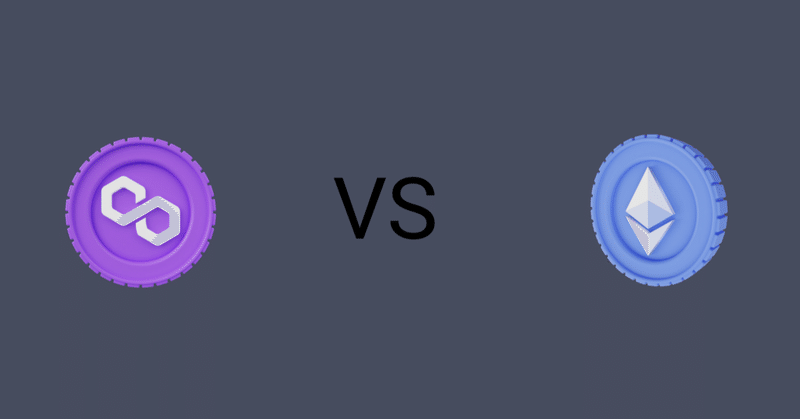
Polygon vs Ethereum: A Comparison of Two Leading Blockchain Platforms
Polygon and Ethereum are two blockchain platforms that are often compared due to their similarities in technology and use cases. In this blog, we will explore the differences and similarities between Polygon and Ethereum, and how they are being used in the blockchain ecosystem.
What is Ethereum?
Ethereum is a decentralized blockchain platform that allows developers to build decentralized applications (dApps) and smart contracts. Ethereum is the second-largest cryptocurrency platform by market capitalization, after Bitcoin. It uses a proof-of-work (PoW) consensus algorithm to validate transactions and create new blocks on the blockchain.
One of Ethereum's main advantages is its ability to support complex smart contracts that can automate a wide range of transactions, including financial contracts, supply chain management, and identity verification.
What is Polygon?
Polygon, formerly known as Matic Network, is a Layer 2 scaling solution for Ethereum that aims to improve the scalability and usability of the Ethereum network. Polygon uses a hybrid PoS (Proof of Stake) and Plasma implementation to achieve high throughput and fast confirmation times for transactions.
Polygon offers several benefits over Ethereum, including lower transaction fees, faster transaction times, and a more user-friendly interface. Polygon also supports interoperability with other blockchain networks, allowing developers to build dApps that can communicate with multiple blockchains.
Comparison between Polygon and Ethereum
Scalability: Ethereum is known to have scalability issues, with high gas fees and slow transaction times during times of high network congestion. Polygon addresses these issues by providing a Layer 2 scaling solution that allows for faster and cheaper transactions.
Transaction Fees: One of the main benefits of Polygon over Ethereum is its lower transaction fees. This makes it more cost-effective for developers to build and deploy dApps on the Polygon network.
Speed: Polygon's hybrid PoS and Plasma implementation allows for faster transaction confirmation times compared to Ethereum's PoW consensus algorithm. This means that transactions can be confirmed in seconds rather than minutes, making Polygon a faster option for dApp developers.
Security: While Polygon uses a hybrid PoS and Plasma implementation to achieve high throughput, it is not as secure as Ethereum's PoW consensus algorithm. However, Polygon's design is still secure enough to support a wide range of dApps and use cases.
Interoperability: Polygon offers interoperability with other blockchain networks, allowing developers to build dApps that can communicate with multiple blockchains. This is not possible on the Ethereum network, which is more isolated in terms of its interoperability with other blockchains.
Conclusion
In conclusion, Polygon and Ethereum are two blockchain platforms that offer unique advantages for dApp developers and users. While Ethereum is the more established platform with a wider range of use cases, Polygon offers a more scalable and cost-effective alternative for developers who need to deploy dApps quickly and efficiently. Ultimately, the choice between Polygon and Ethereum depends on the specific needs and use cases of the developer, and both platforms are likely to continue to coexist and evolve in the blockchain ecosystem.
この記事が気に入ったらサポートをしてみませんか?
